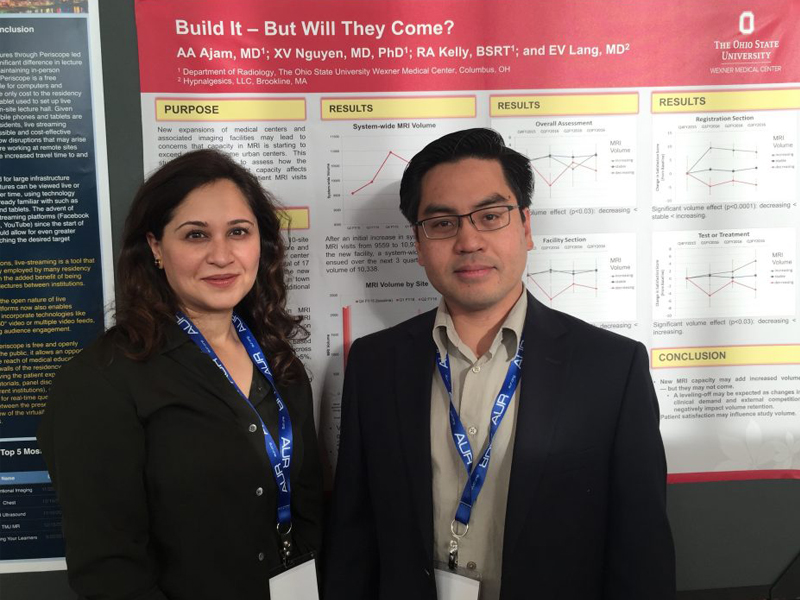Build It, But They May Not Come

New high-end construction in healthcare is booming [1], fueled in part by philanthropic donors concerned with cancer care and other specialty diseases [2]. State-of-the-art MRI facilities typically are included in these projects. Particularly in large urban areas, however, markets have already started showing signs of saturation, with enough or more scanners than needed for the populations served, and free-standing imaging centers are reported to be closing due to low profitability [3]. This has raised concerns about how pre-existing outpatient MRI centers that serve less specialized health needs may fare in such an environment and maintain a patient throughput that supports their existence.
We previously showed that team training of MRI staff in calmative techniques (Comfort Talk®) has been associated with significant reductions in no-show and incompletion rates, ability to offer more novel time-intensive and combined studies, and increased patient satisfaction in longitudinal clinical trials [4-6]. That raised the question whether training and patient satisfaction actually can drive volume distribution in a large urban market that reaches the point of saturation.
Drs. Ajam, Nguyen, Kelly and Lang just presenting a poster at the annual Association of University Radiologists Meeting in Hollywood, Fl. Total MRI visits were tracked in a 10-site university-affiliated hospital system before and after addition of a state-of-the-art cancer center with 3 additional MRI scanners, for a total of 17 scanners. At the time of opening of the new facility, one of the major competitors in town opened a neuroscience center with additional MRI capacity.
As the graph shows, after the backlog was worked off in Q415 volume decreased for the system.
To examine site-specific changes in MRI volume following the peak in Q4 FY15, the MRI sites were separated into 3 groups based on volume trend, which was defined as “decreasing”, “stable”, or “increasing” based on whether average quarterly volume across the subsequent 3 quarters decreased by more than 5%, changed by less than 5%, or increased by more than 5%, respectively.
Interestingly there was a strong correlation between satisfaction ratings on Press Ganey and patient volume: higher scoring facilities kept volume or increased it, declining scores correlated with declining patient visits. I believe that is the first time that a real correlation between patient volume and satisfaction has been shown for outpatient MRI facilities.
Best of all: Sites that had been trained in Comfort Talk® did much better in terms of volume retention or even increase; whereas all other sites lost visitors: even the brand-new modern sparking facility.
Thus – you may build it, but they may not come. A well-meant philanthropic infusion of funds for new construction may in the end actually hurt the entire system when volume decreases, staff has to be reduced, and patients end up having less access.
References
- Morse S. Top healthcare construction projects of 2015; building surges as demand picks up, Revista says. About 97 billion in projects for new hospitals, expansions and off-campus clinics and medical offices currently underway [Nov 09, 2015. Available from: http://www.healthcarefinancenews.com/news/top-healthcare-construction-projects-2015-buidling-surges-demand-picks-revista-says.
- Marshall E. 10 largest donations from individuals to healthcare organizations in 2015 2015 [Dec 07, 2016:[Available from: http://www.beckershospitalreview.com/finance/10-largest-donations-from-individuals-to-healthcare-organizations-in-2015.html.
- Duszak R. Medical imaging: Is the growth boom over? The Neiman Report, No.1, October 2012. Studies in Health Care and Economics [Internet]. 2012 05/27/2016. Available from: http://www.acr.org/~/media/ACR/Documents/PDF/Research/Brief 01/PolicyBriefHPI092012.pdf.
- Lang EV, Ward C, Laser E. Effect of team training on patients’ ability to complete MRI examinations. Acad Radiol 2010;17:18-23.
- Norbash A, Yucel K, Yuh W, et al. Effect of team training on improving MRI study completion rates and no show rates. J Magn Reson Imaging 2016:epub.
- Lang EV, Yuh WT, Ajam A, et al. Understanding patient satisfaction ratings for radiology services. AJR Am J Roentgenol 2013;201:1190-5; quiz 6.


